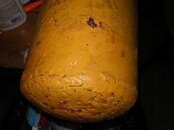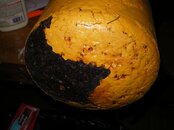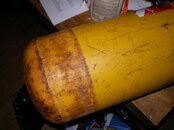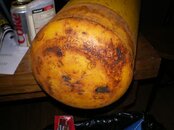Aluminum baked about 250F is in danger of changing the heat treat, above 350F it most diffidently will change the heat treat. Steels are good to the 600-800F range.
The problem with powder coating is that most powder coats cure between 350 and 450F, hence the prohibition on powder coating tanks.
Liquid paints, like used in a auto-paint shop, are forced cured at 120-150F and there is no problem, or danger, with the metal post processing. Remember, there is gasoline in the cars, so do you think they will go high temp and blow up the shop? Acctualy, force cure of solvent/water based paints above 150F or so will cause a skin to form on the paint surface locking in the underlaying solvents/water and results in paint blisters and subsequent rework and costs to the paint processing house. So, cures of these paints above 150 is just not done.
Another thing, if you have a tank in the trunk of your car in the summer it can/will see temps up to 170F. Even on a boat, tanks in the sun can easily 150F surface temps anywhere in the tropics. So, temps in the mid 100'sF are common and expected and do not damage steel or aluminum tanks.








